Working over the past year southwest of Peoria, Illinois at Spring Lake, Nancy Fewkes has produced a body of work that enlists research practices similar to those found in scientific discovery coupled with a gentle attention focused upon the mundane subtleties one can encounter while trekking through isolated place. Last month, the COMP Magazine caught up with Fewkes to discuss her fascination with the photographic medium, recent solo exhibition at Dreambox Gallery in Chicago, interest in the American lotus and the interchange between literature, science and art.
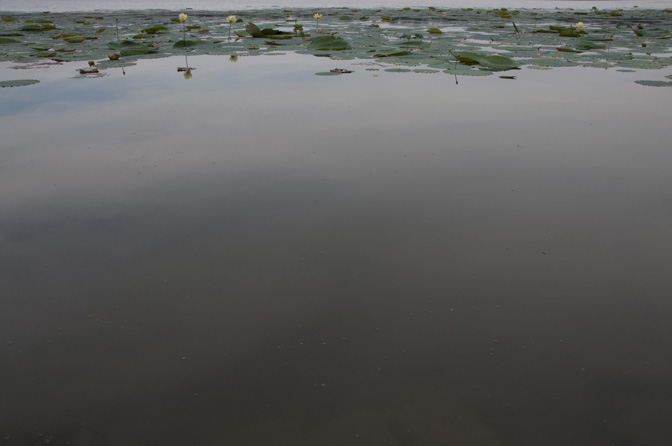
Nancy Fewkes, Notes Along a Shallow Margin, 2015
You’ve been making and thinking about photographs for some time. Can we begin with an introduction to your fascination with the photographic medium?
Photography is one of my native languages, which I attribute partly to my grandfather and his 8mm film camera. Before my brothers and I learned to talk, we were in wire bouncy chairs in my grandparents’ dining room after dinner, watching home movies of ourselves. We grew up on this Sunday night ritual. He ran the films for us backwards, forwards, in fast motion and slow motion. Then a film would break opening a glaring white screen, followed by a noisy search for tape and too much time spent splicing the break–we couldn’t get enough. That light from the projected images flashing off the screen and illuminating our faces while we watched ourselves in the dark was just as exciting to me as the film itself. So I have this connection with a dark room, film, and light that is comfortable and linked to my early childhood. From the start, I was taken with the ability of film to suspend a moment or series of gestures in time, and allow glimpses into a profusion of details that imaged moments I’d never experienced. In first grade, I remember having an epiphany about the irretrievability of passing time, inspired by noticing the dates scrawled on birthday cards. I begged my parents for a camera and finally got a Kodak Brownie Instamatic when I was seven, on the day of my first communion–a gold cross and a camera–it all made sense to me. I was obsessed with photographs, and for hours would study family albums, my parents’ high school yearbooks, Life Magazine, National Geographic, anything I could find. After college, I saved my money for a Nikon FM and arranged for my dad to buy it for me on a business trip to Japan, thinking it would be more authentic purchased in its homeland. Another decisive moment came while working in Sicily at twenty-three, when I declared never to buy a purse that wouldn’t accommodate my camera. My most basic continuing fascination with the medium is about the equation or dialogue of light and time that happens in a mechanism that functions much like the human eye, and creates a fossil-like image that encases and encodes information. I’m still amazed by the great, simple truth that when you give your attention and time to any subject through a camera, it opens and reveals more than you could have imagined. Communicating through imagery has always seemed more natural for me than speaking.
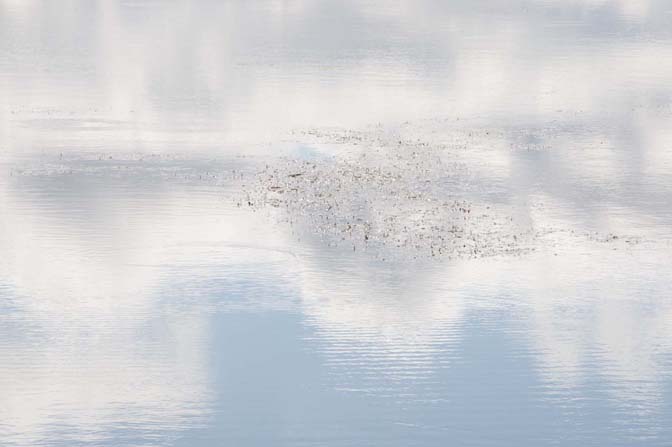
Nancy Fewkes, Notes Along a Shallow Margin, 2015
You recently presented a solo exhibition at Chicago’s DreamBox Gallery entitled Notes Along a Shallow Margin that ran through September 30, 2015. Can you share with us what drew you to Spring Lake, specifically your interest in the American lotus, and how this project has developed?
My connection with Spring Lake was immediate. I do a lot of exploring with one of my friends who is always ready to get in a car and try to find or stumble upon anywhere with me. I had a Nikon D90 that day, lent by another friend so I could finally learn to use a digital camera. We were driving around Sand Ridge State Park, near the Illinois River, when we turned a corner and entered a small road that divides north and south Spring Lake. It was late December of last year, after Christmas, before the first hard freeze, and there was still some evidence of the lotus colonies which I hadn’t even known to exist in Illinois. What remained of the lotus at that time were simple clusters of brown stems with pods, but they had a somewhat surreal, curiously tenacious and vulnerable character leaning at different angles in the lake shallows. I didn’t know anything about the biology or history of the lake at the time, so the initial draw was intuitive and aesthetic. That night I researched the plant, and learned it was a native with intriguing contradictory character traits. Regarded as a sacred spiritual symbol in various cultures, the lotus also can be aggressive and contribute to potentially destructive conditions for other species in its habitat. I decided to follow it through an annual cycle. Wayne Herndon, the DNR biologist for the area, has suggested compelling reading about the drastically changed biology of the Illinois River and its bottomlands, and more specifically, the rehabilitation of Spring Lake; and Alan Harn, archaeologist at the Dixon Mounds Museum, has offered insights into the history of the place. During the ten months of photographing at the lake, I’ve thought a lot about the idea of ‘ecosystems’. Although my point of entry was a focus on a single plant, I’ve come to understand I’m involved in a multi-layered, complex ecosystem and that the conversation is about community and interdependence. You can look at certain biological components of this ecosystem as amazing examples. Environments that support the growth of this and other species of aquatic vegetation require a certain amount of sunlight to reach lake bottom, which is determined by the clarity of the water. The turbulence and resulting degree of suspended sediment in the water depend on the behaviors of fish species that have been able to survive in the specific habitat and/or been introduced intentionally or unintentionally by human presence, and so on. Bottomland marsh areas used to provide significant aquatic vegetation as a food source for birds–the Illinois sits in a prime spot on the Mississippi Valley flyway, one of the major migratory routes in North America. The interrelatedness of the ecosystem is astounding. Because Spring Lake was leveed off from the Illinois River, it was targeted as an ideal place for an experimental rehab project by the DNR, an attempt to recreate bottomland marsh conditions similar to those existing before the dramatic changes of the early part of the 20th century destroyed these important parts of the Illinois River environment. Recently I viewed mastodon bones that had been found here, and learned that this was a significant site in providing information for the seriation and establishment of woodland pottery types in Illinois. As I continue with this project, discovery of the history, pre-history, and biology of the area informs the beginning of an understanding of my own place within the depth and dimensionality of experience and time here.
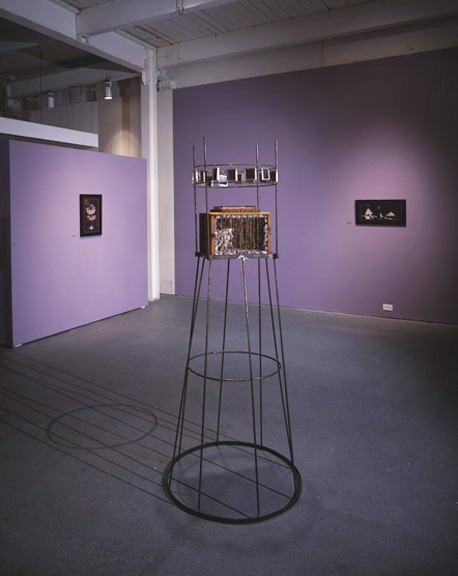
Nancy Fewkes, “Egg Crate” from the installation “The Orrery”, 2001
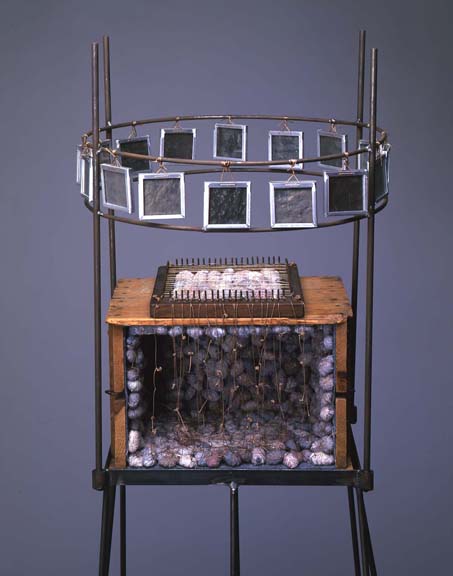
Nancy Fewkes, “Egg Crate” from the installation “The Orrery” (detail) , 2015
When I was initially introduced to this work, I thought of Henry David Thoreau’s Walden, 1854, and Robert Adams’ West from the Columbia: Views at the River Mouth, 1995. Are there any artists, photographers or writers you see as being informative in your approach to photographing Spring Lake?
I’m motivated by personal inquiry and explorations about time, space, light, matter, and energy. To have and ask questions about life and death seems a common part of being human. I remember as a child I asked my father ‘why are we here?’ so often that he started giving me absurd answers. Louise Gluck’s, “The Wild Iris”, with its’ conversations about earthly experience through the voices of a human gardener, a creator, and a variety of plants is very close to me during this project. I’m inspired by the writing and imagery of Barry Lopez, John McPhee, Annie Dillard, Wendell Berry, Robert Adams, Mark Klett, Victoria Sambunaris, Maya Lin and Andy Goldsworthy, to name a few who investigate the natural world and their understanding of it and themselves through their own direct experiences. Eadward Muybridge’s motion studies and photographic inquiry are a continuous wellspring of inspiration for me. Thoreau’s “Walden” is really an early ancestor of this project. Barry Lopez once said he believed that Thoreau was after a foundational mythology, an alternative to capitalism, that integrated place and society in a reciprocal relationship. For me, the work of these artists and writers shares a similar core, advocating from different perspectives for a realization of the actual connectedness between humans, their interests and actions, the world, and all that we call “nature”.
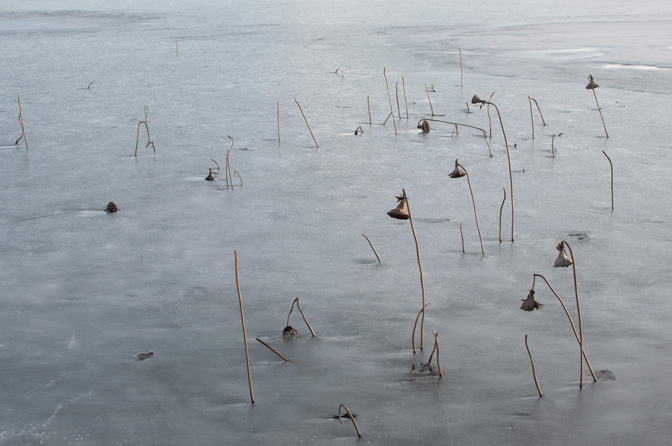
Nancy Fewkes, Notes Along a Shallow Margin, 2015
Barry Lopez wrote a short story called “The Orrery” which inspired my installation by the same title at Scottsdale Center for the Arts several years ago. The sculptural piece shown here, “Egg Crate” was initially created for that installation, and later recycled into its present form for “The Multiplication of Eggs: Experiments and Contraptions” which was shown at The Light Factory in North Carolina. This piece resonates with the Spring Lake work in that it’s also a study of time although considered through the experience of the female body, and the physical properties of photography. In the upper ring of the “Egg Crate” are frames of sensitized, unfixed albumen paper, constantly responding to exposure to light. One of my fascinations for the medium of photo is the frailty and vulnerability of its promise. Although it makes a valiant attempt to hold an image of light reflected from a moment in real time, a photograph will ultimately fade, yellow, and deteriorate regardless of its “archival” quality. Both projects frame my perpetual inquiries into different experiences of time. In Lopez’s story, there was a monk-like character that raked the sand of his solitary desert garden and arranged rocks on it with careful precision. He understood his connection to the universe and the impact his small, unseen gestures had in maintaining balance within the continuum of space and time. Lopez’s ideas and writing, especially about the necessity of building community have always spoken to me, and influenced my work.
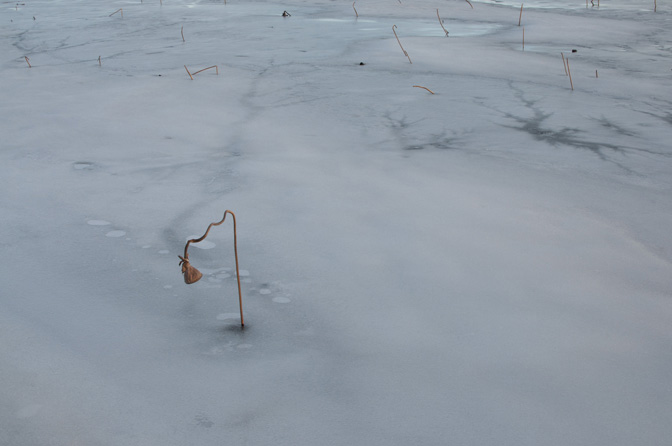
Nancy Fewkes, Notes Along a Shallow Margin, 2015
Wendell Berry articulates this idea of a progressive, shared vision and response with simple clarity: “We have the world to live in on the condition that we will take good care of it. And to take good care of it we have to know it. And to know it and to be willing to take care of it, we have to love it.”
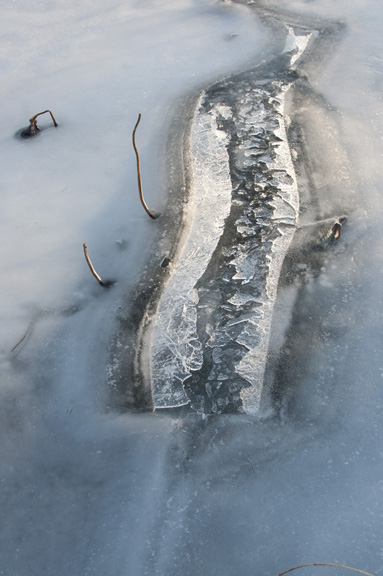
Nancy Fewkes, Notes Along a Shallow Margin, 2015
You also teach at Illinois State University. In part, photography has evolved due to technological advancement and expanded theory. Are there any constants that you continue to share with your students in your teaching? Does this interaction have any impact upon how you make and think about photography?
One of the constants in my teaching is an attempt to guide my students to think and work through various perspectives, theories, and technologies, to see beyond, behind and in between what we have been taught about how the world works. I’m interested in encouraging them to become more conscious of their philosophy of perception—how they view the world and themselves—and to challenge it by working at looking at the connections, sometimes obscure or indecipherable, between things. To inspire students to become lifelong “seekers”, engaged in conscious awareness and daily discovery of the sacredness and profundity within the “mundane” is a teaching goal.
Additional photographs by Nancy Fewkes:

Nancy Fewkes, Notes Along a Shallow Margin, 2015
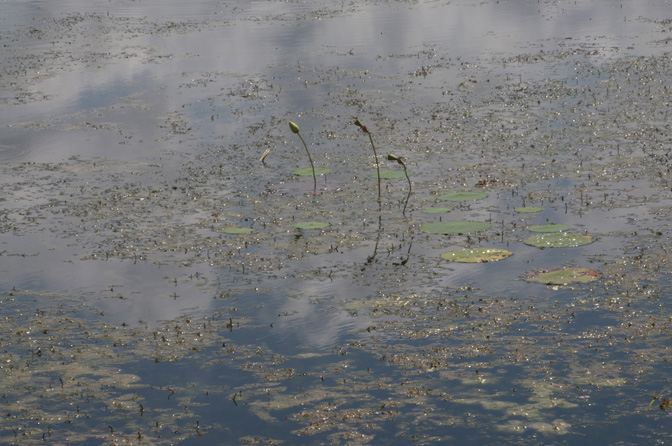
Nancy Fewkes, Notes Along a Shallow Margin, 2015
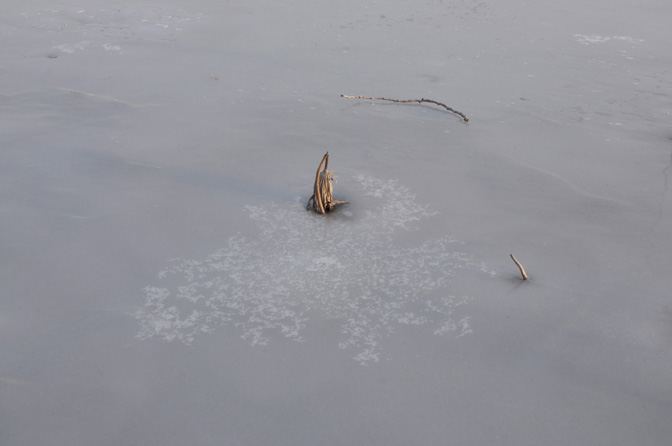
Nancy Fewkes, Notes Along a Shallow Margin, 2015
For additional information on the work of Nancy Fewkes, please visit:
Nancy Fewkes – http://www.nancyfewkes.com/
Art World Chicago – http://artworldchicago.com/2015/08/09/notes-along-a-shallow-margin/
ARTslant Chicago – http://www.artslant.com/chi/events/show/392390-notes-along-a-shallow-margin
Interview by Chester Alamo-Costello


